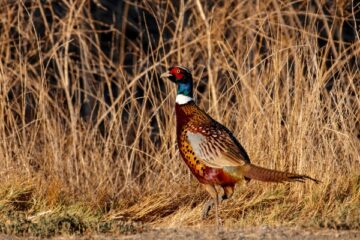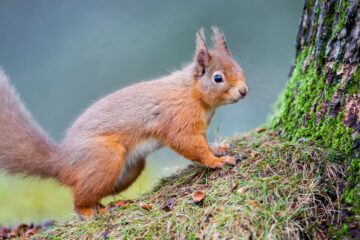
Mark Elliott
MARK ELLIOTT is a well-known vet in the shooting industry and a specialist on gamebirds. Here he talks about the challenges vets face in the rearing season.
It’s a typical day in late June, when I mostly see poults reared from French-bred chicks.
My first port of call is a small game farm producing around 100,000 poults. I start early to allow me to cover the routine programme so I am free in the afternoon to see clients back at the clinic. After an hour’s drive, it’s 7.30am and I’ve five batches to look at that are causing concern.
It is necessary to examine at least four birds from each batch to get a representative sample. So that’s 20 birds to post mortem (PM). Thankfully, the results confirm Coccidiosis is well controlled. Birds due to go out to woods that week are free of disease.
Next, it’s a farm where they have struggled to control the Coccidiosis in partridge. The cause of reinfection is failure to move nipple bars with cups to the night shelters. As a result, the dust inside the houses is collecting in the cups and every drink imparts an infective dose to the birds. It’s easily resolved and that job won’t be forgotten again.
 On to my second site for routine surveillance PMs. We swab day-old chicks as well as looking at problem/targeted batches of older birds. Laboratory tests over the next 48 hours will confirm if there is a problem infection that requires treatment with antibiotics.
On to my second site for routine surveillance PMs. We swab day-old chicks as well as looking at problem/targeted batches of older birds. Laboratory tests over the next 48 hours will confirm if there is a problem infection that requires treatment with antibiotics.
The next visit is much the same, by which time it’s getting towards midday and plans have to be made for the calls that have come in.
I drop in to PM some birds that have been to wood only a week but are emaciated and have four different diseases – Hexamita, Trichomonas, Coccidiosis and Brachyspira. Something is clearly very wrong. I drive out to the pen and have a look. Probable causes immediately present themselves. Buzzards and kites are circling the pens – the stress they create for young poults on first release can have a significant impact.
There is nothing that can be done other than to adapt the environment to give the poults the best chance of coping. A good range of cover where they feel safe, meandering rides, repelling techniques using inflatable scarecrows, etc., all help. It is important to site feed and water stations where the birds can nip out to them, feel safe to do so, and also to make sure they have enough so that competition for resources does not occur.
To add to the problem, the farmer has used huge 1,000L tanks for borehole water (often not as clean as mains) and placed them in bright sunshine. These rapidly build biofilm and heat up. Not only do birds not like to drink hot water, but the consequent bacterial load can make them more prone to diseases. I advise moving the tank into shade, proper disinfection and then chlorination to keep the water fresh and clean, in addition to placing more drinkers and feeders in better positions. A lot of sick birds could be seen so I also added a water-soluble aniseed to the medication.
Back at the practice, in between clients, I process the swabs, do other laboratory work and catch up on phone inquiries. I encourage all the keepers, especially the young ones who are still learning, to call at any time if they need to know something, or even just for a chat about how things are going. We forget many work in isolation and the vet can be a useful point of contact and reassurance.
Well into the evening I head home and on the way drop in to a young keeper rearing for the first time, to see how he is getting on.
That’s another 14-hour day done…
Some of Mark's top tips:
- Move nipple bars with cups to the night shelters to prevent dust from collecting in the cups and infecting the birds.
- Adapt your environment to eliminate stress for young poults by adding a good range of cover so they feel safe.
- Site feed and water stations where birds can nip out to them, feel safe to do so, and to make sure they have enough so that competition for resources does not occur.
- If you can, use fresh mains water to supply drinkers rather than borehole water which may not be as clean. If you must use water tanks, make sure they are sited in the shade and use proper disinfection and then chlorination. Hot water encourages bacteria growth and birds don’t like drinking it.



